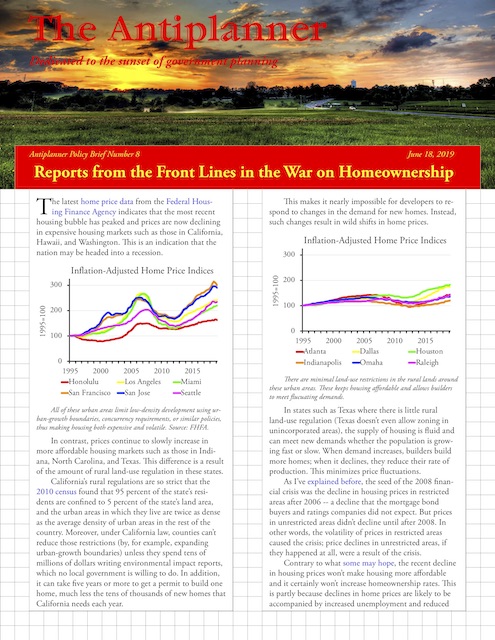A new study finds that some “metro areas have used an urban sprawl to continue to provide ample housing stock for residents” whereas areas that have emphasized dense developments have seen rents reach an all-time high.
Yahoo! News headlined its report on this study, “How affordable housing in big cities is hurt by urban sprawl.” Yet neither the article nor the study explains how urban sprawl in affordable metro areas makes housing in dense metro areas less affordable.
“It seems that the metros most effectively meeting the demand for new housing are still primarily doing so by continuing to sprawl,” says the study, “despite an increasing demand for dense, walkable neighborhoods that prioritize sustainability.” This was supposed to have been written by an economist, but wouldn’t an economist question whether demand for dense neighborhoods is really increasing if builders, whose livelihoods depend on keep up with demand, aren’t building them in less-regulated areas? Continue reading








